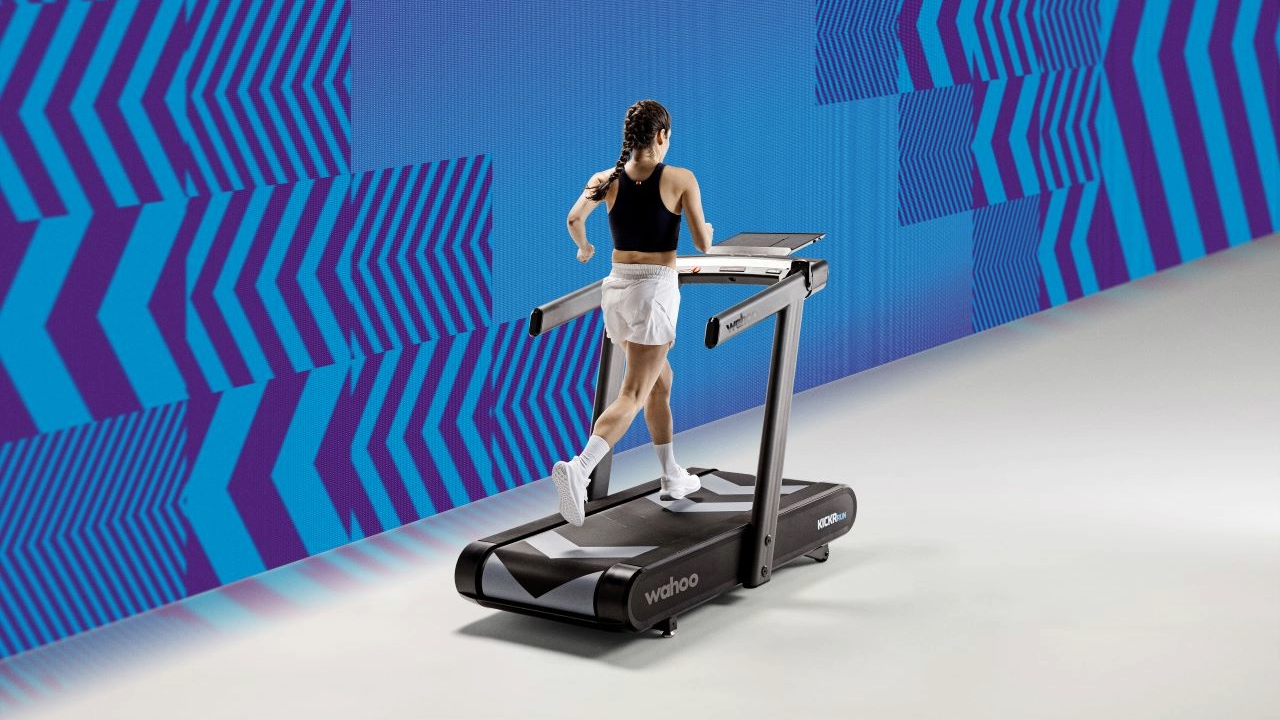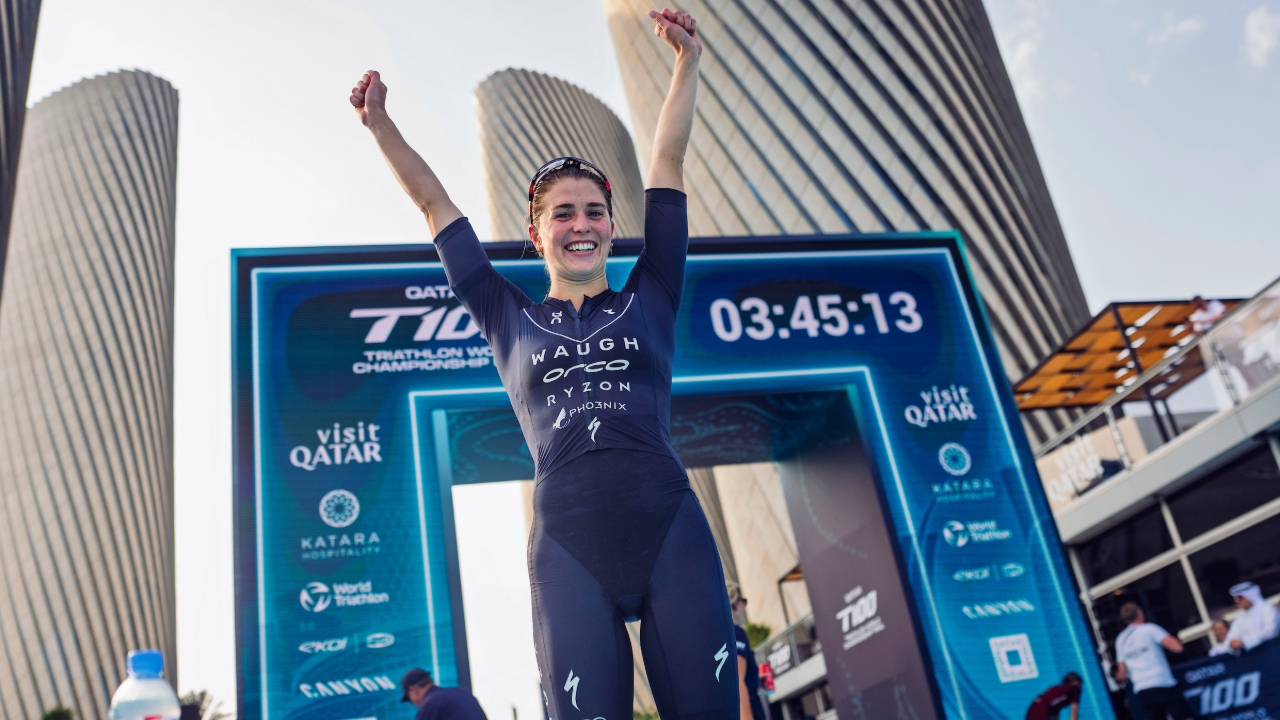If you’ve started diving into the running data you get from your smart watch or treadmill, you’ve most likely heard of VO2 max. But what does VO2 max actually mean, and why should you care about it if you’re looking to improve your running?
In the final instalment of our running data demystified series (check out part 1 on heart rate training and part 2 on running cadence) we break down what VO2 max is, what it means for your run fitness, how to calculate yours – and most importantly, what you need to do to increase your VO2 max.
What is VO2 max?
VO2 max is the maximum amount of oxygen your body is able to take in, transport and utilise during intense exercise. Your VO2 max is expressed as a number which is the maximum millilitres of oxygen per kg of bodyweight per minute (ml/kg/min). It is a way to quantify aerobic fitness, and it’s used as an indicator of endurance performance potential. Put simply, the higher your VO2 max is, the better your aerobic fitness will be. This is important for endurance sports such as running and triathlon, where being able to sustain an aerobic effort for an extended period of time is key. A ‘good’ VO2 max however, varies depending on factors such as your age and gender.
How does increasing VO2 max improve your running?
At low-medium intensities, the body uses oxygen as its primary method of breaking down glycogen and turning it into adenosine triphosphate (ATP) – the body’s energy currency which enables muscles to contract.
The better your body is at utilising oxygen, the longer (and faster) you’ll be able to run before your body tips over into the anaerobic energy system. At any intensity, lactate is produced as a by-product of the breakdown of carbohydrates. However, lactate is produced more quickly once the intensity exceeds the rate at which oxygen can be utilised, i.e. once the body switches to the anaerobic energy system. When lactate is produced at a rate which exceeds the body’s ability to clear them, lactate and hydrogen ions accumulate in the blood and lower the pH – which is why you’ll have heard the phrase ‘lactic acid’. This creates that burning, fatigued sensation in the muscles and inhibits muscle function – forcing you to slow down.
Therefore, being able to utilise more oxygen as efficiently as possible (i.e. having a high VO2 max) extends the amount of time and the intensity at which you can run before that performance-inhibiting fatigue kicks in. Essentially, a higher VO2 max means you’ll be able to run faster, for longer.
How to calculate VO2 max
VO2 max is largely influenced by genetics. Elite-level endurance athletes will typically have a very high VO2 max, because they’re genetically pre-disposed to being ‘good’ at endurance sports. For amateurs, most of us won’t have hit the ceiling of our VO2 max yet. Therefore with targeted and specific training, we can improve our current VO2 max and get closer to reaching our athletic potential.
The most accurate way to find out your VO2 max is to undertake testing in a laboratory setting, where you would run at progressively faster paces while wearing a mask which measures your oxygen uptake.
However, for most amateurs regular lab testing isn’t feasible. A simple way to get an indication of your VO2 max is to do the following calculation: 15 x (maximum heart rate divided by resting heart rate). For example if your max heart rate is 180bpm and your resting heart rate is 48bpm, the equation would be 15 x (180/48). Learn more about finding your maximum heart rate here.
As your fitness increases, your resting heart rate will start to decrease because your cardiovascular system becomes more efficient. This in turn will give you a higher VO2 max score. Smart watches and fitness wearables are often equipped with technology to calculate your VO2 max, typically using the Firstbeat method which takes heart rate data and GPS/speed data to analyse how hard your body is having to work to achieve various paces, and uses this analysis to give you a VO2 max score.
VO2 max calculations outside of a lab setting are unlikely to ever be perfectly accurate. However they do give you a benchmark to be able to track a trend in your running fitness.
VO2 max by age
What we define as a ‘good’ VO2 max can depend on various factors, one of which is age. Think of it a bit like a ‘good for age’ marathon time. Generally speaking an exceptional result for a 20 year old is going to be faster than what is still, relatively, an exceptional result for a 65 year old. Below is a chart of typical VO2 max scores by gender and age group. It’s important to highlight though that at an amateur level, it’s less about how your VO2 max score compares to others. And more about the trend you’re seeing in your score – if your VO2 max is improving, you can be confident your training load is effectively improving your run fitness.
| VO2 max by age – women | ||||
| Age Group | Average | Good | Very Good | Excellent |
| 20-24 | 37-41 | 42-46 | 47-51 | >51 |
| 25-29 | 36-40 | 41-44 | 45-49 | >49 |
| 30-34 | 34-37 | 38-42 | 43-47 | >46 |
| 35-39 | 32-35 | 36-40 | 41-44 | >44 |
| 40-44 | 30-33 | 34-37 | 38-41 | >41 |
| 45-49 | 28-31 | 32-35 | 36-38 | >38 |
| 50-54 | 26-29 | 30-32 | 33-36 | >36 |
| 55-59 | 24-27 | 28-30 | 31-33 | >33 |
| 60-65 | 22-24 | 25-27 | 28-30 | >30 |
| VO2 max by age – men | ||||
| Age Group | Average | Good | Very Good | Excellent |
| 20-24 | 44-50 | 51-56 | 57-62 | >62 |
| 25-29 | 43-48 | 49-53 | 54-59 | >59 |
| 30-34 | 41-45 | 46-51 | 52-56 | >56 |
| 35-39 | 39-43 | 44-48 | 49-54 | >54 |
| 40-44 | 36-41 | 42-46 | 47-51 | >51 |
| 45-49 | 35-39 | 40-43 | 44-48 | >48 |
| 50-54 | 33-36 | 37-41 | 42-46 | >46 |
| 55-59 | 31-34 | 35-39 | 40-43 | >43 |
| 60-65 | 29-32 | 33-36 | 37-40 | >40 |
How to increase VO2 max
As outlined, every individual will have a ceiling on the highest VO2 max they can achieve because a large amount of your VO2 max comes down to genetics – how physiologically predisposed your body is to being efficient at utilising oxygen. However, for most recreational athletes, we won’t be close to our full potential. Therefore we can increase VO2 max by completing targeted training sessions.
Alongside the Zone 2 aerobic base work (i.e. long, easy runs) you’re likely to be doing already. Incorporating interval workouts with efforts near your VO2 max can be highly effective. It’s important to pace these intervals correctly to ensure you’re working the correct energy system. Using the six zone heart rate methodology, you want to be working in zone 6. Any easier, and you’ll be working at threshold rather than VO2 max. This is why it’s important to establish a good base of fitness through steady aerobic sessions before adding this type of high intensity work into the mix.
Example VO2 max treadmill workouts
The idea of these sessions is to build up time running at your VO2 max pace. For most people, a good place to start is 3 or 4 minute efforts with a similar amount of recovery time in between so you can continue to hit the target pace/HR throughout the entire workout. Complete these workouts on the treadmill to make it easy to control the pace and hit the target efforts without distraction.
Workout 1: 5 x 4 mins
Warm up: 10 minutes easy building to steady pace
Main set: 5 x 4 minutes @ VO2 max (Z5, 95-100% max heart rate) with 4 minutes easy between each rep
Cool down: 10 minutes gradually reducing the pace down to a walk for the last minute
This session is a good introduction to VO2 max work because you’ve got long recovery intervals between the efforts. You’ll spend a total of 20 minutes at VO2 max. If you don’t have a heart rate monitor, then aim for slightly faster than your 5km PB pace or a 9/10 effort. Depending on your fitness and experience level, you might want to start by completing 3 or 4 x 4 mins with 2 minutes walking, 2 minutes jogging in between.

Workout 2 – Wahoo X 8 x 3 mins
The 8 x 3 mins run workout from the Wahoo X workout library is suitable for experienced runners, or as a progression from the 5 x 4 mins session. You’ll spend a total of 24 minutes at VO2 max, with slightly shorter recovery in between.
Warm up: 10 minutes easy followed by activations (short sprints)
Main set: 8 x 3 mins @ 95-100% max HR with 2 minutes steady between each rep.
Cool down: 5-10 mins easy jog (Zone 1)
After a few weeks of incorporating VO2 max effort sessions into your run training, you should experience a boost in running fitness which allows you to run faster at your steady/endurance pace for the same heart rate/perceived effort.
Dive further into the data behind running with our guide to running heart rate zones and our explainer on running cadence and other form-based metrics.





















